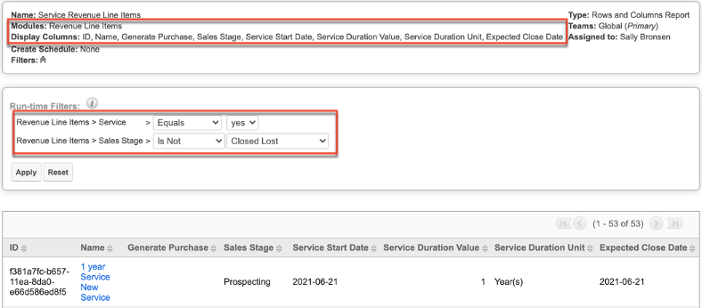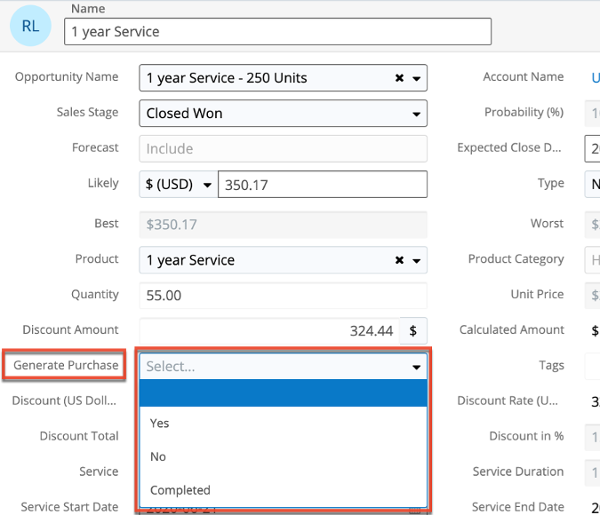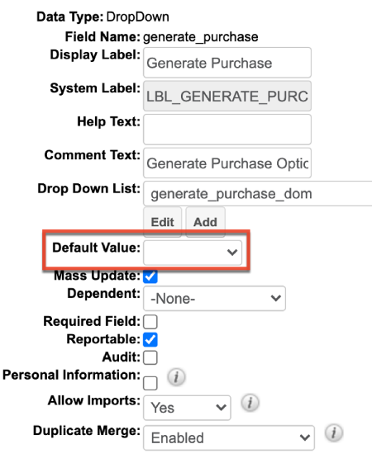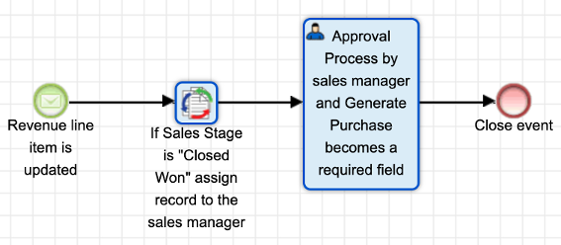In an effort to continuously evolve and improve usability and data accuracy, Sugar introduces a change in functionality for the Active Subscriptions dashlet in the 10.1 (Q3 2020) release. Upon upgrading your instance, users will find their Active Subscriptions dashlet is no longer populated with data. This article explains what has changed and how to populate data into your Active Subscriptions dashlet after upgrading to 10.1.
Because of the new features, functionality, and processes introduced in 10.1 and outlined in the sections below, the Active Subscriptions dashlet will not be populated upon upgrade.
10.1 introduces two new modules, Purchases and Purchased Line Items. The Purchases and Purchased Line Items modules contain the list of goods and services your customers have purchased and the number of times those goods and services have been purchased, respectively. For more information please refer to the Purchases and Purchased Line Items page in the Application Guide.
10.1 introduces a new dropdown field to the Revenue Line Items module, Generate Purchase. On upgrade, it will be blank for all existing revenue line item records. Records created after upgrade will receive the default value, “Yes”. In order for existing revenue line items to be queued for purchase generation, they need Generate Purchase set to “Yes”. The field is available for mass update via the Revenue Line Items list view or can be updated via import. By default, the Generate Purchase field will not appear on any layouts but can be added by an admin user.
Purchase and purchased line item records are automatically created from revenue line items that meet the following criteria:
In Sugar 9.3 the Active Subscriptions dashlet is available for use in the Accounts record view dashboard, which references the current account's revenue line items that are marked as a “Service”, in a "Closed Won" status, have a start date in the past, an end date in the future, and are related to a “Closed Won” parent opportunity. In Sugar 10.1, the Active Subscriptions dashlet switches to referencing purchased line items that are marked as a “Service”, have a start date in the past, and an end date in the future.
After upgrading to 10.1, the Active Subscriptions dashlet will begin to be populated with purchase data that is generated automatically from revenue line item records based on the New Process outlined above. As an admin user, you will need to consider which approach to take for existing vs newly created revenue line item records:
The changes and capabilities introduced in 10.1 allow you to have control over which revenue line items should generate purchases and therefore show in the Active Subscriptions dashlet. Before taking the steps outlined in the sections below to generate new purchase and purchased line item records you may want to consider the following:
By default, revenue line items that were created prior to upgrade will not generate purchase data as the Generate Purchase field will be blank. You have several options on how to handle the existing records. Please refer to the list below and follow the links to each section for additional information and recommendations.
Taking no action for existing revenue line items requires no steps from you as an admin user. You will only need to consider how to handle newly created revenue line items.
The ability to mass update the Generate Purchase field in revenue line items is available to all users by default. When considering populating the Active Subscriptions dashlet with automatically generated purchase data, we recommend an admin user add the Sales Stage, Service, and Service Start Date fields to the Search layout by navigating to Admin > Studio > Revenue Line Items > Layouts > Search. When used as a filter set and selecting the values which are appropriate for your business use case (e.g. this year, this month, last 7 days, etc), these fields will help you identify the records you want to mass update. For more information on Mass Update, please refer to the User Interface page in the Application Guide.
The picture below shows these filters applied to revenue line items, the Mass Actions menu, and the ability to mass update the Generate Purchase field to "Yes". Performing the mass update on the filtered records in this example will generate purchase data from these revenue line items, which in turn will populate the Active Subscriptions dashlet for the associated accounts. Once the purchase data has been generated, the value for the Generate Purchase field will automatically update to "Completed".
Note: Mass updating records will also update the modified by user and date information for each record.
The ability to import revenue line items is available to all users by default. When considering populating the Active Subscriptions dashlet with automatically generated purchase data, we recommend taking the following steps:


Updating the revenue line item records with the Generate Purchase field to "Yes" will generate purchase data from these records, which in turn will populate the Active Subscriptions dashlet for the associated accounts. Once the purchase data has been generated, the value for the Generate Purchase field will automatically update to "Completed". For more information, refer to the Importing Records section of the User Interface page in the Application Guide.
Note: Updating via import will retain historical modified by user and date information for each record.
The Generate Purchase field is hidden by default on the Revenue Line Items record view. If you would like to give users access to this field, an admin user will need to add it to the view via Admin > Studio > Revenue Line Items > Layouts > Record View. The picture below represents what a user will see in edit mode on the record view when the Generate Purchase field is available. The default value for newly created records is "Yes". However, records existing prior to update will have a blank value which the users can choose to update as appropriate. Once the purchase data has been generated, the value will automatically update to "Completed". For more information, refer to the Studio page in the Administration Guide.
Revenue line items that are created after upgrade will generate purchase data as the Generate Purchase field will default to "Yes". You have several options on how to handle the new records. Please refer to the list below and follow the links to each section for additional information and recommendations.
The Generate Purchase field will remain hidden on the layout and defaulted to "Yes". Purchases and purchased line item records will be automatically generated, and the Active Subscriptions dashlet will begin to be populated by the purchase data marked as a "service".
Note: Users will have access to mass update the field by default. An admin can disable mass update for the field from within Admin > Studio.
The Generate Purchase field is hidden by default on the Revenue Line Items record view. If you would like to give users access to this field, an admin user will need to add it to the view via Admin > Studio > Revenue Line Items > Layouts > Record View. The picture above represents what a user will see in edit mode on the record view when the Generate Purchase field is available. The default value for newly created records is "Yes". Once the purchase data has been generated, the value will automatically update to "Completed".
Note: Records existing prior to the update will have a blank value that the users can choose to update as appropriate.
As an admin user, you can choose to modify the Generate Purchase field's default behavior via Admin > Studio > Revenue Line Items > Fields > Generate Purchase. Additionally, you can incorporate the field into SugarBPM by utilizing Process Business Rules and Process Definitions to leverage internal processes you have established or would like to create prior to moving forward. For additional information, refer to the SugarBPM page in the Administration Guide. The following steps illustrate and example of utilizing those capabilities together:


The addition of the Purchases and Purchased Line Item modules is an exciting feature for our Sugar Sell users that supports the customer life cycle after the "Closed Won" sales stage. For users to take advantage of the features and incorporate historical sales data, an admin user will need to take steps to capture that data. After you have analyzed your data, use cases, and decided on how to move forward with both historical and newly created records, you and your users can begin to fully realize the capabilities of how the modules can work together to give a full picture of your accounts' historical sales data and a time-aware picture of their current status and worth in terms of products and services they have purchased.